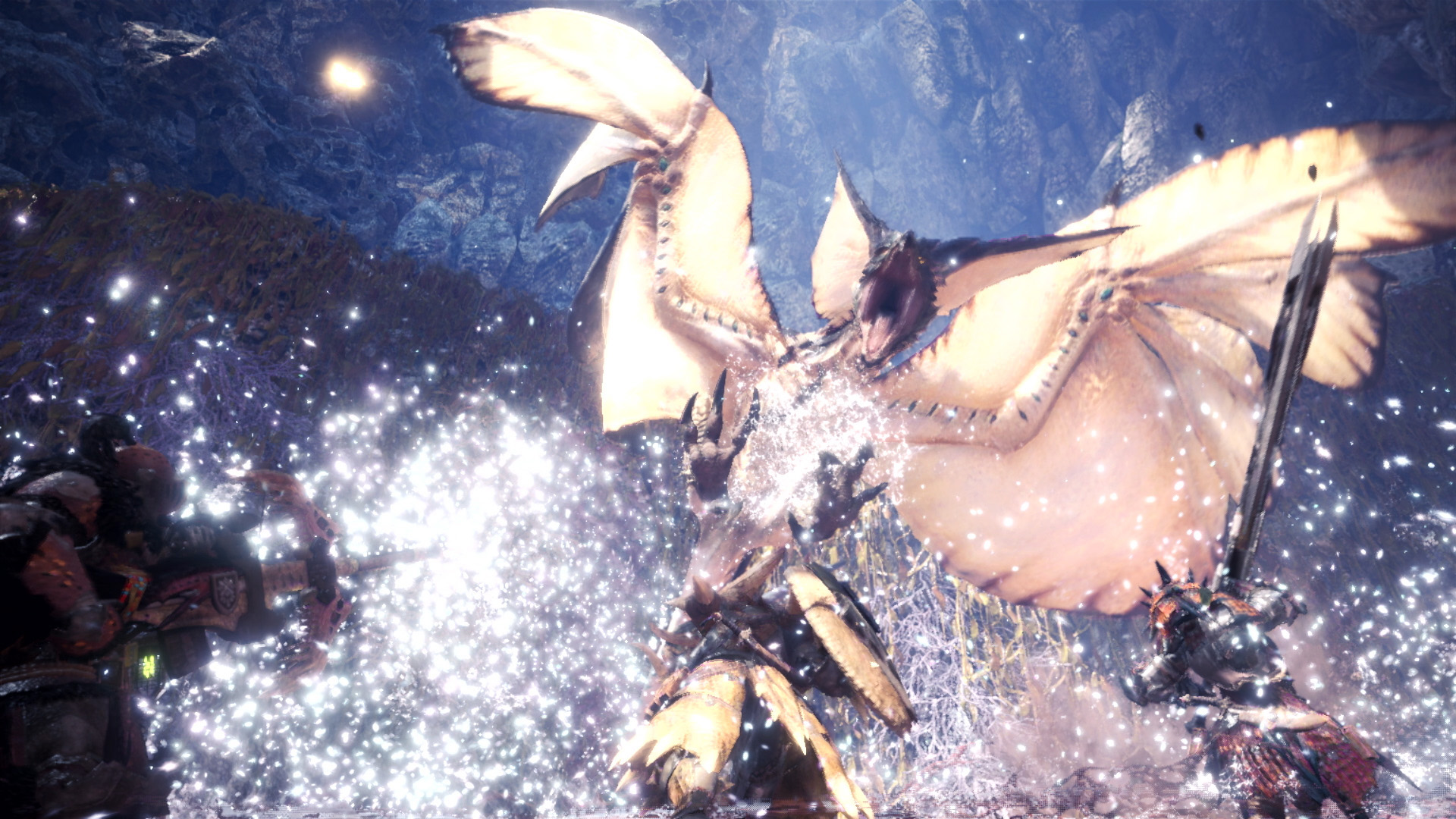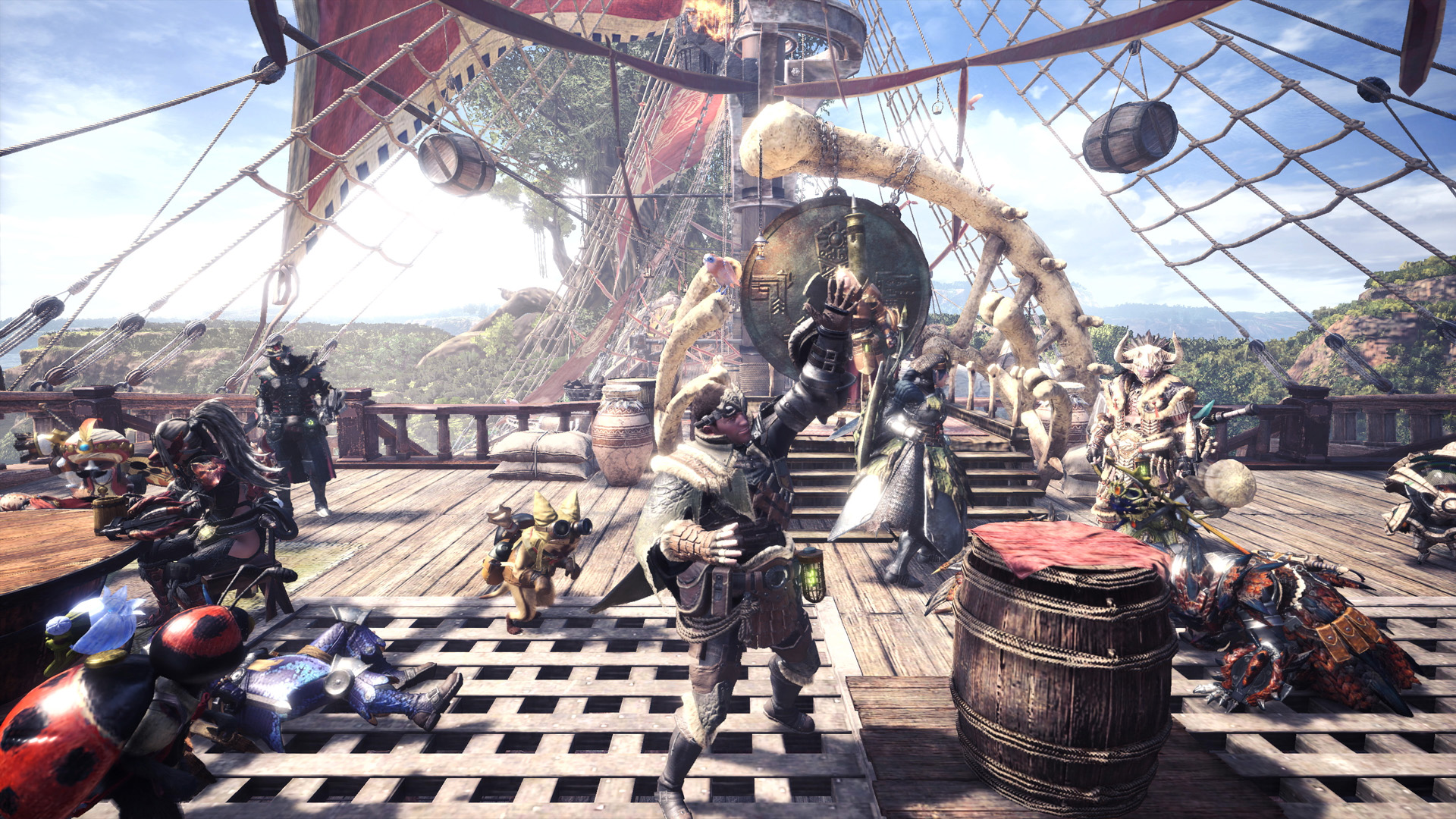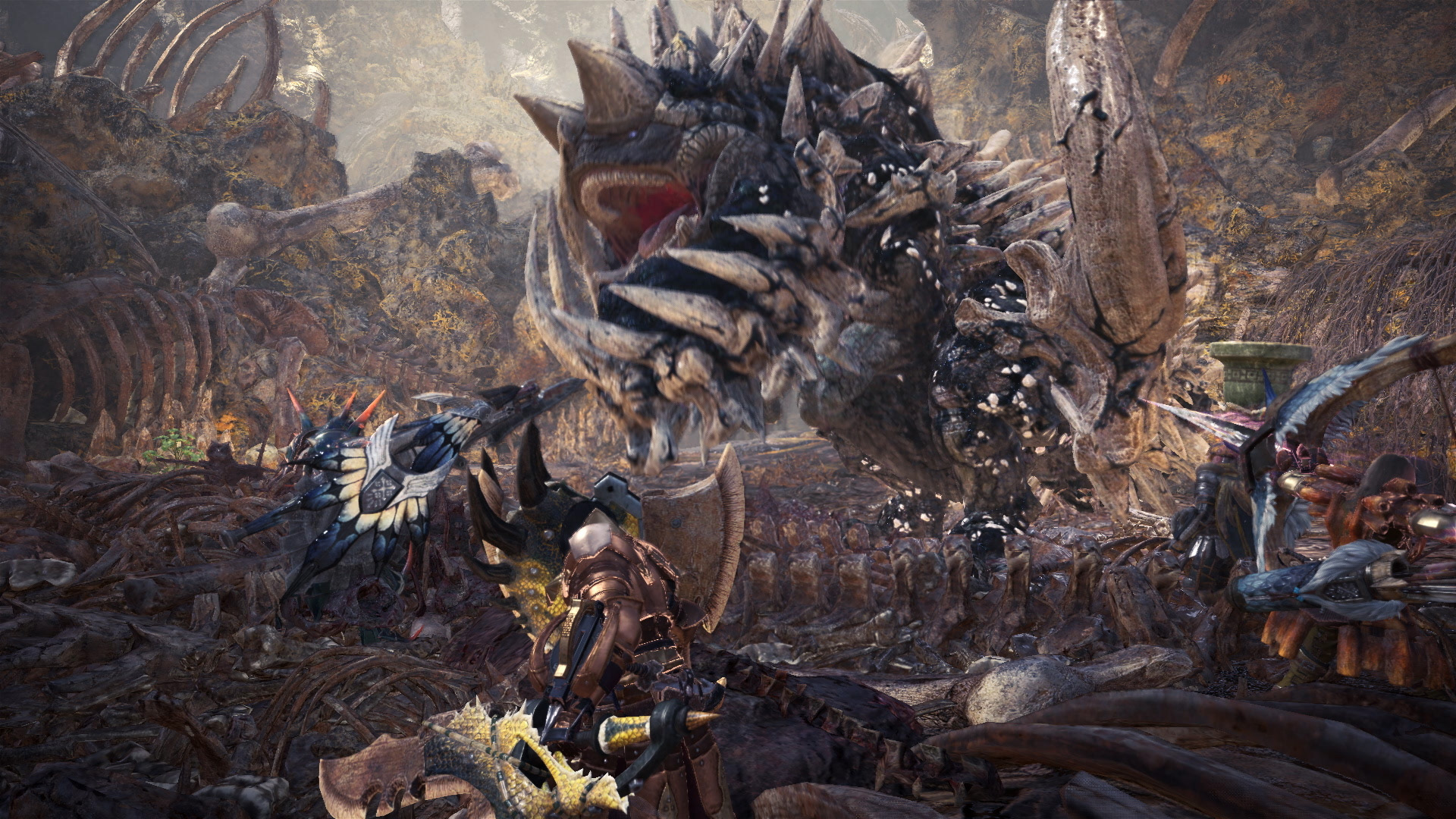Monster Hunter: World brings the acclaimed series to current-gen consoles and, if you believe the PR, to the masses. What was once a series with a dedicate niche fan-base is now, apparently, suitable for all.
Ordinarily I’d run a mile from reviewing a title like Monster Hunter: World. These esoteric Japanese-centric games, whilst they have their western fans, generally don’t fare so well internationally.
With Monster Hunter: World, Capcom wanted a game that was at once more accessible to newcomers but still retained the elements that appeal to the hardcore fans. It seemed, to me, to be a good jumping-in point to see what all the fuss was about. As it turned out this review was as difficult for me to write as the game was for me to play.

Players take on the mantle of an adventurer that is part of an expedition to the New World. The settlement of Astera is the game’s hub packed with shops and NPCs. Quests can be obtained by talking to your handler or by checking out the notice board.
Aiding you in the wild is a customisable cat-like creature called a Palico. These companions provide a support role but also have attacking and defensive skills.
You enter the open world by either simply walking out or selecting a quest. These are referred to as expeditions. If you like to explore at your leisure, you can do so. And this is worth doing every now and again to collect items for crafting supplies and upgrading equipment. If you select a quest, it’s the same deal, except you have an objective and usually a time limit.

The open-world features inter-connected zones with varying ecosystems. There are no boundaries, you can trek from one zone to another. You can carry out quests alone (with your Palico) or with other online players.
The creatures the populate the game act in a fairly lifelike manner. To the point that you can spend ages just watching them. When you attack, they react appropriately. As they become injured, their movement starts to become laboured. Chasing after a defeated mortally-wounded monster in order to deliver the killing blow, when I’ll it wants to do is slip away and die peacefully, feels kind of cruel.
The actual combat is a bit messy, compared to what I’m used to. Blows seem imprecise and the damage inflicted inconsistent. I could be missing something, but considering the fighting is a major part of the game I’d have thought it could be more intuitive. That being said, the monster hunts are intended to be more akin to boss battles than a simple button-mashing slaughter. Considering my general disdain for bosses, I found some of the fights a bit tiresome.

The game visuals are pretty good, made all the better for Xbox One X owners who get their own choice of enhanced graphics or better framerate. That being said, it’s not exactly photo-real and some of the monster’s animation, especially when hurt, are a bit clunky.
Monster Hunter: World is not a game designed for occasional play. The hub-based gameplay structure means that once you commit to a mission you need to invest the time required to finish it. The game will not accommodate your sudden need to deal with a domestic issue.
The gameplay is deep enough that a significant amount of time is spent in the game hub buying, selling and crafting. Personally, this is just in-game administration and not really the fun part. I play games for escapism not as a quest for phat loot and worthless virtual accolades and items.

The gameplay is best broken down thus, hunt monsters, get loot, craft better equipment, hunter stronger monsters, get better loot, craft better equipment.
Despite their best efforts, Capcom’s Monster Hunter: World is still more of a game for the fans. The changes are likely to make the game appeal to the Dark Souls / Bloodborne set, but if you are not interested in a massive learning curve, have no time for complex game mechanics and long periods of inventory management, this is probably not a game for you.

Released: March 2018
Rating: R16
Platforms: Xbox One (also released on PlayStation 4)
Genre: Action, RPG
Developer: Capcom
Publisher: Capcom

